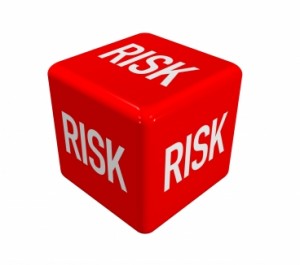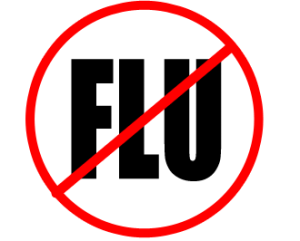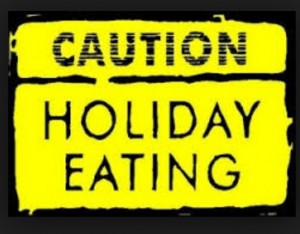 Psychosocial environment refers to the culture and climate of the workplace. Examples of the psychosocial environment of a workplace include respect for work-life balance, mechanisms to recognize and reward good performance, valuing employee wellness, encourage employee feedback about organizational practices, zero tolerance for harassment, bullying and discrimination, ensuring employee psychological safety and health.
Psychosocial environment refers to the culture and climate of the workplace. Examples of the psychosocial environment of a workplace include respect for work-life balance, mechanisms to recognize and reward good performance, valuing employee wellness, encourage employee feedback about organizational practices, zero tolerance for harassment, bullying and discrimination, ensuring employee psychological safety and health.
Tag: health
Risk Factors to Health
 Health and wellbeing are affected by many factors, and those that are associated with ill health, disability, disease or death are known as risk factors. Risk factors are presented here individually, however in practice they do not operate in isolation. They often coexist and interact with one another.
Health and wellbeing are affected by many factors, and those that are associated with ill health, disability, disease or death are known as risk factors. Risk factors are presented here individually, however in practice they do not operate in isolation. They often coexist and interact with one another.
Behavioural risk factors that can be eliminated or reduced through lifestyle or behavioral changes include:
- tobacco smoking
- excessive alcohol consumption
- poor diet and nutrition
- physical inactivity
- excessive sun exposure
- insufficient vaccination
- unprotected sexual activity.
Biomedical risk factors may be influenced by a combination of genetic, lifestyle and other broad factors. Biomedical risk factors include:
- overweight and obesity
- high blood pressure
- high blood cholesterol
- impaired glucose tolerance
How will a healthy work environment benefit my bottom line?
 Research shows that healthy people working in a healthy environment are key to business success. That’s because a healthy workplace improves productivity and reduces employers’ costs.
Research shows that healthy people working in a healthy environment are key to business success. That’s because a healthy workplace improves productivity and reduces employers’ costs.
A healthy workplace will:
- Improve employee health outcomes
- Make it easier to attract and retain qualified employees
- Lower absenteeism
- Reduce health benefit costs
- Enhance morale
- Reduce risk of injury
- Improve job performance
via What Makes a Healthy Work Environment? – Healthy Environments.
Recommendations for Physical Activity in Adults
 Being physically active is important to prevent heart disease and stroke, the nation’s No. 1 and No. 5 killers. To improve overall cardiovascular health, we suggest at least 150 minutes per week of moderate exercise or 75 minutes per week of vigorous exercise (or a combination of moderate and vigorous activity). Thirty minutes a day, five times a week is an easy goal to remember. You will also experience benefits even if you divide your time into two or three segments of 10 to 15 minutes per day.
Being physically active is important to prevent heart disease and stroke, the nation’s No. 1 and No. 5 killers. To improve overall cardiovascular health, we suggest at least 150 minutes per week of moderate exercise or 75 minutes per week of vigorous exercise (or a combination of moderate and vigorous activity). Thirty minutes a day, five times a week is an easy goal to remember. You will also experience benefits even if you divide your time into two or three segments of 10 to 15 minutes per day.
For people who would benefit from lowering their blood pressure or cholesterol, we recommend 40 minutes of aerobic exercise of moderate to vigorous intensity three to four times a week to lower the risk for heart attack and stroke.
via American Heart Association Recommendations for Physical Activity in Adults.
Prevention of the Flu
 What everyday steps can I take to stop the spread of germs?
What everyday steps can I take to stop the spread of germs?
There are steps you can take in your daily life to help protect you from getting the flu.
- Wash your hands often with soap and water or an alcohol-based hand rub.
- Avoid touching your eyes, nose, or mouth. Germs spread this way.
- Try to avoid close contact with sick people.
- Practice good health habits. Get plenty of sleep and exercise, manage your stress, drink plenty of fluids, and eat healthy food.
- Cover your nose and mouth with a tissue when you cough or sneeze. Throw the tissue in the trash after you use it.
- If you are sick with flu-like illness, stay home for at least 24 hours after your fever is gone without the use of fever-reducing medicine.
Health Tip: Why Get an Annual Physical?
 Even though you may be feeling healthy, it’s important to get regular physical exams to help ensure that you stay that way.
Even though you may be feeling healthy, it’s important to get regular physical exams to help ensure that you stay that way.
The U.S. National Library of Medicine says regular physicals will allow your doctor to:
- Check regularly for signs of disease. Early detection often helps improve the chances of recovery.
- Determine your risk of future health problems, and possibly, to prevent them.
- Talk with you about your lifestyle, and to recommend changes.
- Give you any needed vaccinations.
- Get to know your history, in the event that you become seriously ill.
via Health Tip: Why Get an Annual Physical? – Drugs.com MedNews.
What’s at-risk or heavy drinking?
 For healthy adults in general, drinking more than these single-day or weekly limits is considered “at-risk” or “heavy” drinking:
For healthy adults in general, drinking more than these single-day or weekly limits is considered “at-risk” or “heavy” drinking:
• Men: More than 4 drinks on any day or 14 per week
• Women: More than 3 drinks on any day or 7 per week
About 1 in 4 people who exceed these limits already has alcoholism or alcohol abuse, and the rest are at greater risk for developing these and other problems. Again, individual risks vary. People can have problems drinking less than these amounts, particularly if they drink too quickly.
via What’s at-risk or heavy drinking? – Rethinking Drinking – NIAAA.
Lifestyle Risk Factors
Top 10 Holiday Diet Tips of All Time
 1. Trim back the trimmings. Go all out and deck the halls with boughs of holly, glitter, and lights, but when it comes to holiday food, accessorize with care. To shave calories, go easy when adding nuts, cheese, cream sauces, gravy, butter, and whipped cream — additions that don’t add much to the meal, but can add plenty to your waistline. Trim calories wherever you can so you leave the party feeling satisfied, but not stuffed, recommends Carolyn O’Neil, MS, RD, author of The Dish on Eating Healthy and Being Fabulous.
1. Trim back the trimmings. Go all out and deck the halls with boughs of holly, glitter, and lights, but when it comes to holiday food, accessorize with care. To shave calories, go easy when adding nuts, cheese, cream sauces, gravy, butter, and whipped cream — additions that don’t add much to the meal, but can add plenty to your waistline. Trim calories wherever you can so you leave the party feeling satisfied, but not stuffed, recommends Carolyn O’Neil, MS, RD, author of The Dish on Eating Healthy and Being Fabulous.
2. Wear snug clothes and keep one hand busy. When you wear snug-fitting attire, chances are you’ll be too busy holding in your stomach to overeat. While you stand around looking posh in your holiday finery, hold a drink in your dominant hand so it won’t be so easy to grab food, recommends obesity expert Cathy Nonas, MS, RD.
3. Chew gum. When you don’t want to eat, pop a piece of sugarless gum into your mouth. This works well when you’re cooking or when you’re trying not to dive into the buffet, says Nonas.
4. Be a food snob. If you don’t love it, don’t eat it, says American Dietetic Association spokeswoman Melinda Johnson, MS, RD. Scan the buffet for foods you truly treasure and skip the everyday dishes that are available all year long. And don’t think it’s your responsibility to sample everything on the buffet. Go ahead and indulge in your personal holiday favorites, then find a seat and, slowly and mindfully, savor every mouthful.
5. No skipping meals. Always eat normally on the day of a party. “People who skip meals to save up calories tend to overeat everything in sight once they get there,” says Katherine Tallmadge, MA, RD, author of Diet Simple. “Eating sensibly throughout the day will take the edge off the appetite and empower a bit of restraint.” Start with a nourishing breakfast, have a light lunch, then a small snack or salad shortly before the event.
6. Check it out. First things first. When you arrive at the party, grab a sparkling water with a twist, and wait at least 30 minutes before eating. This will give you time to relax, get comfortable in your surroundings, and survey your food choices on the buffet before diving in, says Tallmadge. A buffet is an invitation to eat all you can, and unless you carefully scrutinize it and make wise choices, you’re likely to overeat.
7. Add fun and games. Cynthia Sass, MPH, MA, RD, co-author of Your Diet Is Driving Me Crazy, proposes taking the focus off food and getting family and friends more active during holiday parties. Think horseshoes, badminton, sledding, ice skating, or building snowmen. Indoors, try a spirited game of charades, or rent an instructional dance video followed by a dance-off. “The best parties include dancing, so why not make dancing after eating a new holiday tradition for a great form of fun and recreation?” asks David Katz, MD, MPH, author of The Flavor Point Diet.
8. Alternate alcohol with nonalcoholic beverages. Alcoholic drinks are loaded with calories — especially holiday favorites like eggnog. “Cut your alcohol calories in half by alternating water or seltzer between alcoholic beverages,” Katz advises.
9. Skip the appetizers. “Eschew the appetizers rather than chewing on them,” says Katz. If you need a little nibble before the meal, go for the veggies, fruit, salsa, or a small handful of nuts.
10. Limit the variety. Brian Wansink, PhD, author of Mindless Eating, suggests putting only two items on your plate when you go to the food table. Return as many times as you like, but only take two items each time. “Variety stimulates appetite, and if you limit your choices to just a few items and stick with these, it will be easier to control than eating a little bit of 20 different dishes,” agrees Katz.
E-Cigarettes: Health and Safety Issues
They look like the real thing. The end glows as you inhale. As you exhale, you puff out a cloud of what looks like smoke. It’s vapor, similar to the fog you might see at rock shows, says M. Brad Drummond, MD. He’s an assistant professor of medicine at Johns Hopkins University School of Medicine.
All e-cigarettes work basically the same way. Inside, there’s a battery, a heating element, and a cartridge that holds nicotine and other liquids and flavorings. Features and costs vary. Some are disposable. Others have a rechargeable battery and refillable cartridges.
Using an e-cigarette is called “vaping.”
Are They Safe?
The nicotine inside the cartridges is addictive. When you stop using it, you can get withdrawal symptoms including feeling irritable, depressed, restless and anxious. It can be dangerous for people with heart problems. It may also harm your arteries over time.
So far, evidence suggests that e-cigarettes may be safer than regular cigarettes. The biggest danger from tobacco is the smoke, and e-cigarettes don’t burn. Tests show the levels of dangerous chemicals they give off are a fraction of what you’d get from a real cigarette. But what’s in them can vary.
“E-cigarettes may be less harmful than cigarettes,” Drummond says. “But we still don’t know enough about their long-term risks or the effects of secondhand exposure.”
Pro and Con
E-cigarettes have triggered a fierce debate among health experts who share the same goal — reducing the disease and death caused by tobacco. But they disagree about whether e-cigarettes make the problem better or worse.


